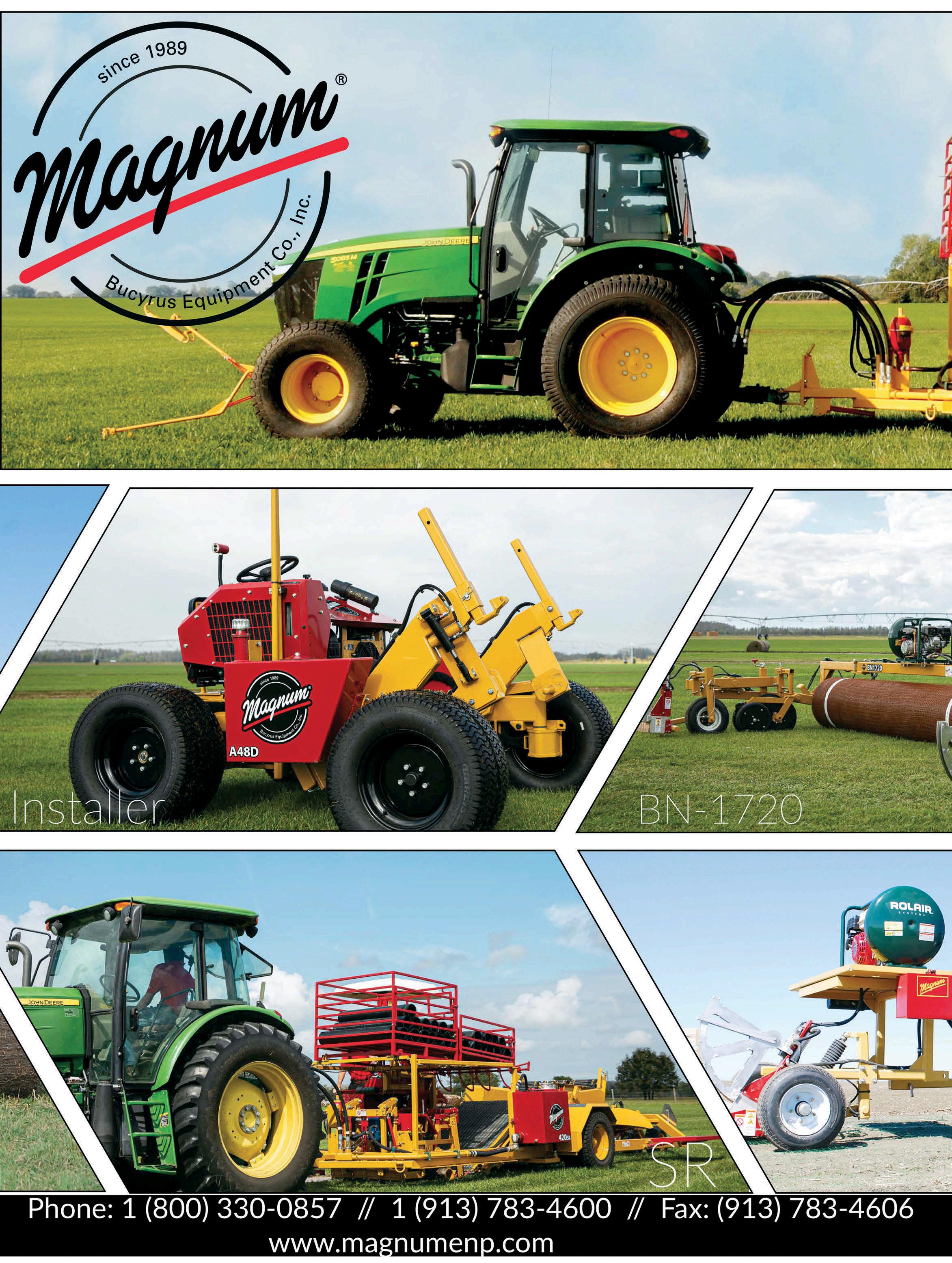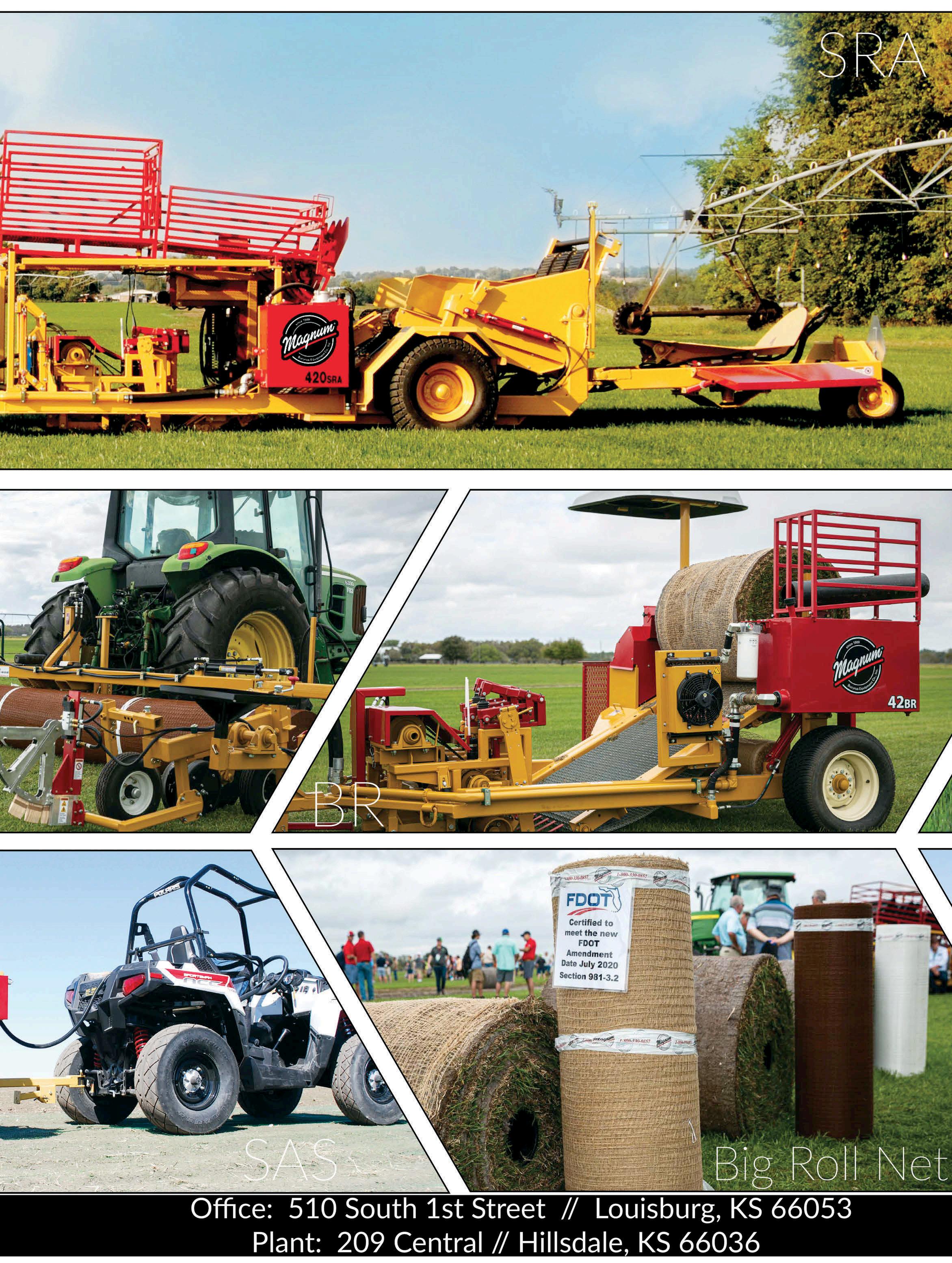
3 minute read
Sod Checkoff Updates from the Road
by TPIturfnews
By Casey Reynolds, PhD
One of the most important components of implementing any checkoff program is industry feedback. In talking with checkoff directors at the other 22 USDA Research and Promotion programs, they all spent significant time in promoting their programs ahead of the vote, getting input from industry stakeholders, and making sure that they did everything they could to widely publicize the program. Not only does it raise awareness throughout the industry, but it also provides an opportunity to make any changes to the proposed program ahead of the vote. The last 12 to 18 months have also provided valuable time to communicate with the USDA Agriculture Marketing Service and let them know what we are hearing from our industry. They have said from the very beginning that this is not their program, but rather it is our industry’s program, and they are there to make sure the proposed checkoff works for us. Many state sod associations began having in-person meetings in mid to late 2021 as state and local Covid-19 restrictions began to loosen. The first of these meetings was held in Maryland in June of last year as the Turfgrass Producers of Maryland held their annual meeting on the eastern shore. Since then, I have attended in-person checkoff sessions in California, Florida, Georgia, Kansas, Mississippi, New Jersey, North Carolina, South Carolina, Tennessee, Texas, and Wisconsin. I have also done virtual checkoff sessions to state sod associations in Florida, Michigan, and Minnesota, as well as helped producers lead checkoff sessions in Oregon and Rhode Island.
Much of the discussion at these meetings has revolved around key details of the proposed program such as board formation, nomination and selection, voting, costs, compliance, and what type of research and promotion could or should be funded with checkoff dollars.
Timing is also a key discussion point, and as it stands today, the current timeline is as follows. We anticipate a 60-day public comment period opening sometime this summer. This public comment period is our industry’s chance to provide feedback collectively and individually on any and every part of the proposed program. It is also at this point that the USDA and I cut off all contact to prevent any impression that I, or anyone else, is having any influence on it. This is a fundamental rule at USDA to ensure that everyone’s voice is heard equally and a question I have received in my travels. Will I or anyone else be working behind the scenes to steer the USDA during the public comment period? The answer is no. Individuals, trade groups, and anyone else are forbidden from meeting with USDA staff once the public comment period opens. This ensures that all comments are handled through the Federal Register website where they are available for public viewing. After the 60-day public comment period is complete, the USDA will review all public comments, make any changes requested by the industry, and then post the final version of the proposed program along with a 30-day notice of the voting period. One of the potential changes to the proposed checkoff program that often comes up at recent sod producer meetings is the idea of having a set percentage of dollars automatically earmarked for funding research and promotion in the state from which it comes. There is certainly a precedent for this in other checkoffs, and there is no reason it can’t be part of our industry’s checkoff as well, if that is what the industry desires. It can be implemented through the public comment period, and available for everyone to see in the final version of the proposal to be voted upon. Again, this is our industry’s checkoff, not the USDA’s or anyone else’s, and you as sod producers will ultimately decide on it. I am here to serve as a resource for questions or comments, so please reach out to me anytime if you’d like to discuss the proposed checkoff or upcoming referendum.
Casey Reynolds, PhD, is executive director of Turfgrass Producers International. rs











